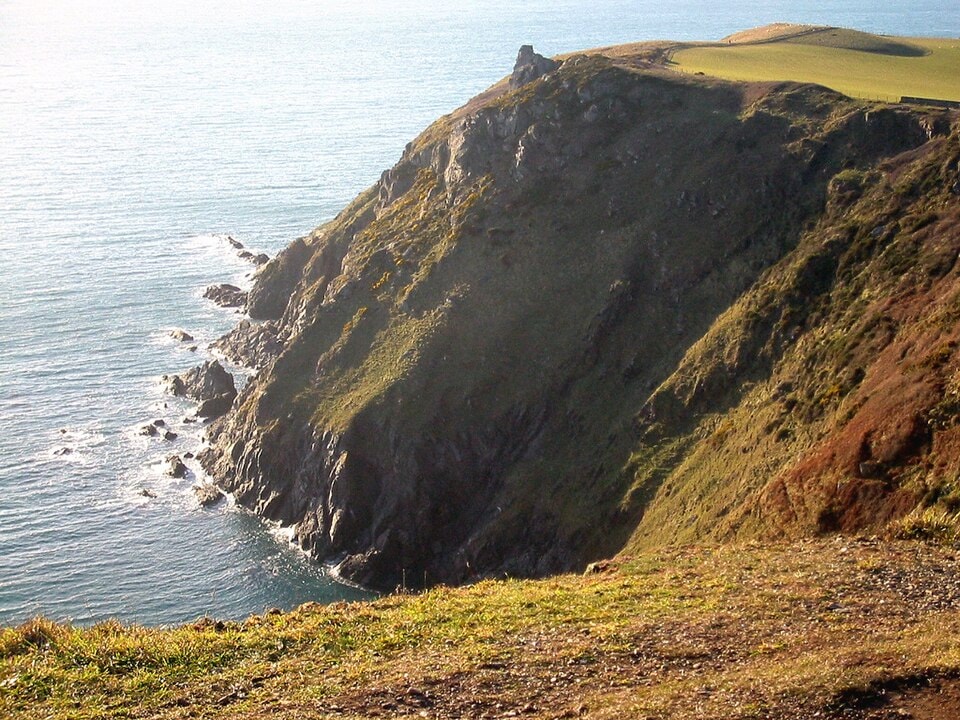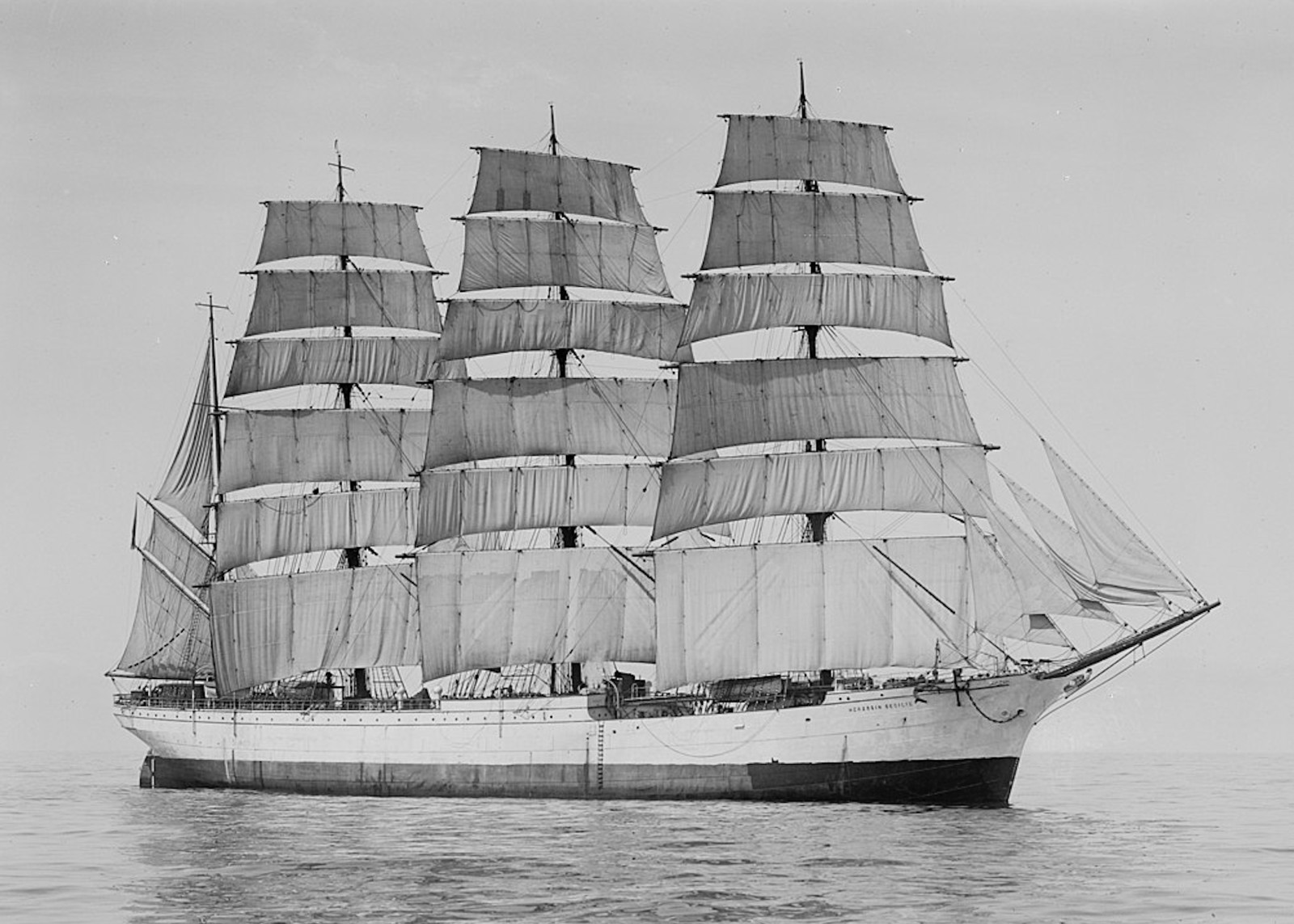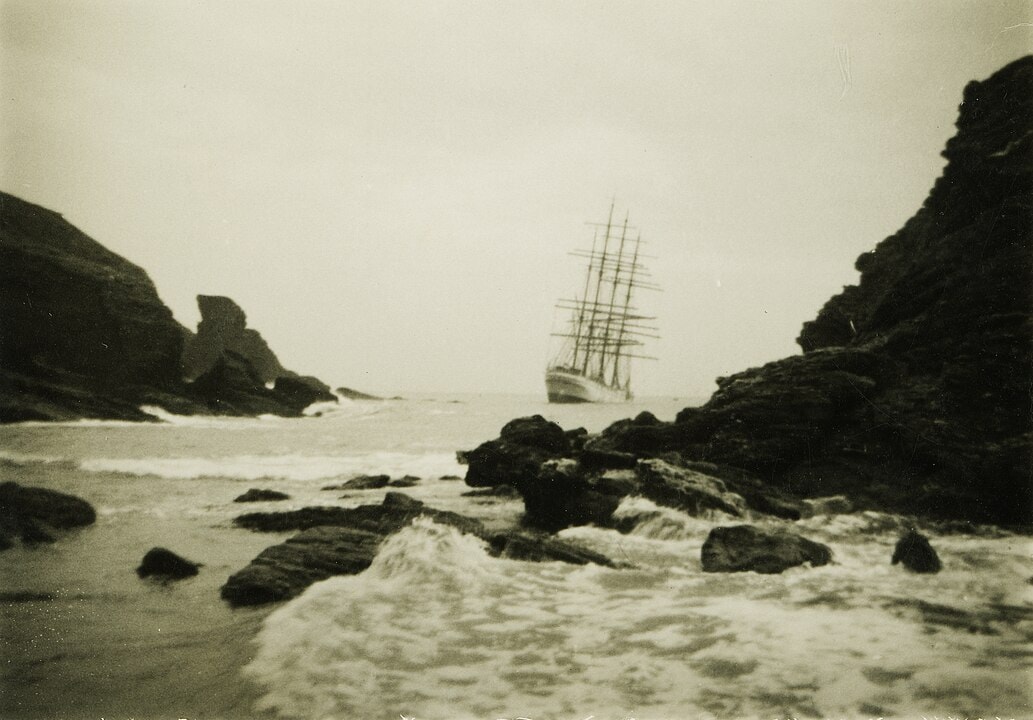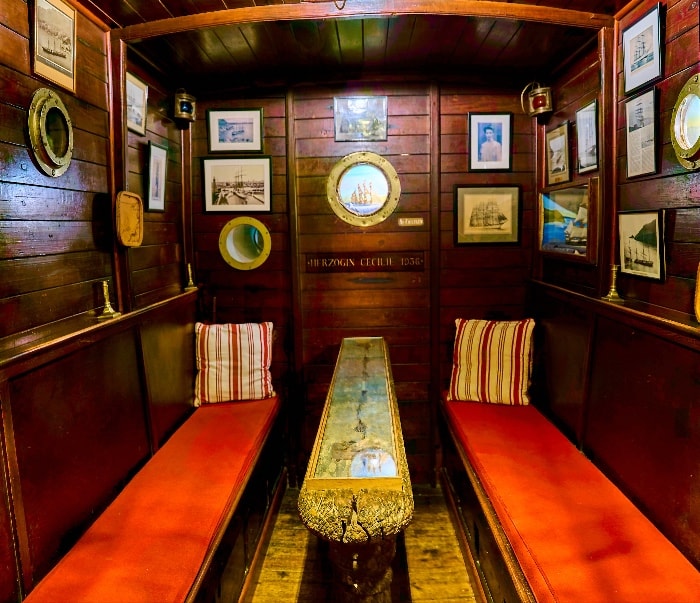.jpeg) Guest Blog Post - The Cottage Hotel
Guest Blog Post - The Cottage Hotel
Tucked between dramatic cliffs and the rolling waves of the South Devon coast, Hope Cove is more than just a picturesque seaside retreat. This quiet village, nestled near Salcombe and Kingsbridge, has a long and often surprising history that stretches back thousands of years. Beneath its peaceful charm lies a rich tapestry woven from ancient settlements, daring smugglers, tragic shipwrecks, and Cold War secrets.
From its earliest days as a site of prehistoric activity and its roots as a simple fishing settlement, Hope Cove has always had a deep connection to the sea. Its traditional fishermen’s cottages and stone walls whisper of a time when life here was tough, weather-beaten, and built on hard work and local lore. In the 18th and 19th centuries, the cove’s rugged coastline and hidden inlets made it the perfect hideaway for smugglers running tea, tobacco, and brandy under the noses of the authorities—often with the full cooperation of the local community.
Maritime disaster, too, left its mark. Hope Cove’s shores have claimed many ships, the most famous being the majestic four-masted barque Herzogin Cecilie, which ran aground in 1936 and still captures the imagination of visitors and maritime historians alike.
The 20th century brought a different kind of intrigue. During World War II, the clifftops above Hope Cove housed RAF Bolt Head, a vital link in Britain’s air defence system, later repurposed during the Cold War as part of a secret radar network.
Today, while the smuggling and shipwrecks have faded into history, Hope Cove continues to draw those in search of beauty, heritage, and a connection to the stories that shaped this remarkable coastal community.
Hope Cove's Pre History - an Iron Age Legacy
Long before Hope Cove became a haven for fishermen and smugglers, its dramatic coastline was a strategic stronghold for ancient communities. The most striking evidence of this early human activity is found at Bolt Tail, a rugged headland just southwest of the village.
Perched atop Bolt Tail lies the remnants of an Iron Age promontory fort, dating from approximately 800 BC to 43 AD.This fortification, known as Bolt Tail Camp, is characterized by a substantial earthen rampart stretching 274 meters across the neck of the headland, with heights reaching up to 4.6 meters. The design includes an inturned entrance, a common feature in Iron Age forts, providing both defense and controlled access .
While no formal excavations have been conducted, surveys suggest the presence of wooden roundhouses within the enclosure, indicating it may have served as a settlement or a defensive refuge for local tribes. The fort's commanding position offers expansive views over Bigbury Bay and the English Channel, underscoring its strategic importance in monitoring maritime activity.
Evidence has also been found at Bolt Tail in the form of flint tools from the late Mesolithic (6000BC to 4000BC) and Neolithic (4000BC to 2200BC).
Visitors can experience this slice of prehistory by walking the South West Coast Path from Hope Cove to Bolt Tail. The route meanders through coastal scenery, culminating at the fort's earthworks, where the ancient ramparts still contour the landscape. Interpretive signage along the path provides insights into the site's historical context, enhancing the journey through time.
For those interested in delving deeper, the South Devon Area of Outstanding Natural Beauty (AONB) and the National Trust occasionally host guided walks and heritage events, offering expert perspectives on the area's rich archaeological tapestry.
 By Roglap at English Wikipedia, CC BY-SA 3.0
By Roglap at English Wikipedia, CC BY-SA 3.0
A Traditional Seaside Fishing Village
Long before the days of tourists and tea rooms, Hope Cove was a working Devonshire fishing village, shaped by the rhythms of the sea and the strength of its community. The village originally developed around a thriving local fishing industry, and its very layout and buildings tell a story of survival, adaptation, and intimate knowledge of the coastline.
The sheltered twin bays of Inner Hope and Outer Hope made this part of the South Hams coastline an ideal spot for small-scale fishing. The natural protection offered by the headlands gave local fishermen a chance to launch and land their boats in relative safety, even in rough weather. Over time, this small seaside village grew organically, its development closely tied to the seasons and the catch.
Villagers fished for crab, lobster, mackerel, herring, and pilchards—much of it either sold locally or preserved in salt and sent to nearby market towns like Kingsbridge or across the channel to France. Fishing was tough, physical work, and whole families were involved: men went to sea, while women and children helped with processing, mending nets, and selling the day’s haul.
Inner Hope's Fishing Cottages
The defining architectural feature of Hope Cove is its cluster of traditional fishermen’s cottages, many of which still stand today. These charming buildings are typically constructed from local stone—often rubble limestone or slate—and whitewashed to reflect the sun. Low ceilings, thick walls, and small windows helped keep out the worst of the weather and made the most of warmth during colder months.
Roofs were commonly thatched with wheat straw or later tiled in slate, and the cottages were nestled close together for protection against Atlantic winds. Their compact design also reflected the need to build around the contours of the land, with many homes backing directly onto the cliffs or nestling into hollows for shelter.
Harbour Walls
With fishing at the heart of life in Hope Cove, the community built and reinforced stone harbour walls and seawalls to protect moored boats and cottages from tidal surges and storms. Much of this work was communal, with locals pooling time and resources to maintain the defences. While the walls have been repaired and rebuilt over time, remnants of the original stonework can still be seen today, particularly in Inner Hope, where the small beach remains a working landing point for a handful of fishing boats.
Some walls and slipways were engineered with clever channels to allow storm water to escape or be diverted, demonstrating a deep-rooted understanding of the sea and the need for sustainable, practical design.
Walking through Hope Cove today, it's easy to imagine the smells of salt fish drying in nets, the clang of boat chains, and the low hum of daily routine. Many of the cottages still carry the names of former occupants or fishing-related functions, and some have retained original features like ship’s timbers used as roof beams or cobbled thresholds worn smooth by generations of boots.
Though much of the fishing trade has diminished in scale, a handful of local boats still operate from the cove today, continuing a tradition that goes back centuries. The spirit of the sea remains at the heart of this small seaside village, preserved not just in stone, but in the stories passed down through generations.
Brandy, Blades and Bonfires: The Smugglers of Hope Cove
In the 18th and early 19th centuries, Hope Cove’s tranquil exterior masked a darker reality. This small seaside village became a hotspot for smuggling—a trade driven not just by greed, but by harsh economic pressures, high taxes, and centuries-old coastal cunning.
The sandy beach you see today is the scene of some serious skulduggery.
The roots of smuggling in Hope Cove lay not in villainy, but in survival. Following the Napoleonic Wars, taxes on everyday goods in England (tea, tobacco, brandy, silk) were cripplingly high. For the ordinary working family, buying legal imports was simply unaffordable. At the same time, the government’s tightening grip on maritime trade made fishing and small-scale coastal commerce less profitable and more bureaucratic.
In this climate, smuggling wasn’t a lifestyle choice—it was often the only way to put food on the table. When a keg of French brandy could be sold quietly for ten times its cost, and a family could earn in one night what they might otherwise scrape together in a month, the temptation was irresistible.
Hope Cove's Sheltered Harbour is a Smuggler's Delight
Hope Cove’s natural geography made it a smuggler’s dream. Its twin bays, Inner and Outer Hope, were secluded, difficult to approach by land, and almost invisible from the sea unless you knew exactly where to look. Hidden caves and coves, twisting cliff paths, and narrow slipways allowed smugglers to land contraband under the cover of darkness.
Better still, the village sat just a short sail from Brittany, and local fishermen already knew the route well. Boats could land at night, offload barrels and bundles to awaiting carts or donkeys, and have the evidence hidden away before first light.
Violence and Defiance
But smuggling wasn’t without its dangers—and at times, it turned deadly. One infamous story from 1785 tells of Richard Cullin, a customs officer who had the misfortune to interrupt an illicit landing. He was thrown from the cliffs at Hope Cove to his death, a chilling reminder of the stakes involved.
In another incident, a customs officer was tied to a donkey and paraded through the streets by locals before being dumped in a bog, bruised and humiliated. Eighteen fishermen’s wives were once arrested for carrying smuggled goods inland and publicly insulting the coastguard, an act of defiance that led to jail sentences—and no doubt some village heroics.
These weren’t isolated events. Smugglers operated in organised networks, often with entire communities complicit in hiding goods, misleading officials, or feigning ignorance.
So were they villains? Or simply victims of unfair laws and an unforgiving economy?
The answer, like the tides, isn’t black and white. Smuggling wasn’t just opportunistic theft; it was often driven by desperation, local loyalty, and a deep resentment of the wealthy elite who imposed the taxes. Many in Hope Cove saw smugglers not as criminals, but as Robin Hood figures, standing up to an unjust system.
At the same time, there’s no denying the violence and intimidation that came with the trade. Smuggling was dangerous business—those who crossed the smugglers, including fellow villagers, risked beatings or worse.
On the Rocks - Maritime Disasters at Hope Cove
Hope Cove’s serene waters belie a long and treacherous history of shipwrecks. For centuries, the unforgiving coastline, hidden reefs, and sudden storms made this stretch of South Devon particularly perilous for passing vessels. From Spanish galleons to proud sailing ships, many met their fate dashed upon the rocks near this small headland—a tragic legacy still remembered today.
The Spanish Armada and the San Pedro el Mayor
One of the earliest recorded maritime disasters occurred during the retreat of the Spanish Armada in 1588. The San Pedro el Mayor, a hospital ship, foundered near Hope Cove and was wrecked just offshore. Though the crew of around 140 men survived, they were captured by locals and, in the lawless tradition of the time, the wreck was plundered—its cargo stripped by villagers before the authorities could intervene.
The surviving Spaniards were eventually ransomed back to their homeland, but the wreck of the San Pedro el Mayormarked the beginning of a long and often morally murky relationship between Hope Cove and its wrecks.
The Herzogin Cecilie
Perhaps the most famous shipwreck to leave its mark on the village was that of the Herzogin Cecilie, a magnificent four-masted windjammer. Built in 1902 and renowned as one of the fastest sailing ships in the world, she ran aground at Soar Mill Cove—just along the coast—in 1936, not 1906 as often misremembered.
 Pictured above: The Herzogin Cecilie afloat in Australia. Pictured below: The vessel wrecked at Hope Cove:
Pictured above: The Herzogin Cecilie afloat in Australia. Pictured below: The vessel wrecked at Hope Cove:
 Despite efforts to refloat her, she was battered by storms and eventually sank in Starehole Bay. Local craftsmen carefully salvaged much of her interior, and parts of the ship were later incorporated into the Cabin at the Cottage Hotel. Today, this unique space preserves the memory of the Herzogin Cecilie and her final voyage—a place to sit, sip, and reflect on a time when the sea gave as much as it took. What better place, after all, to enjoy a drink on the rocks?
Despite efforts to refloat her, she was battered by storms and eventually sank in Starehole Bay. Local craftsmen carefully salvaged much of her interior, and parts of the ship were later incorporated into the Cabin at the Cottage Hotel. Today, this unique space preserves the memory of the Herzogin Cecilie and her final voyage—a place to sit, sip, and reflect on a time when the sea gave as much as it took. What better place, after all, to enjoy a drink on the rocks?
 Image depicts a cabin salvaged from the Herzogin Cecilie and restored inside the The Cottage Hotel.
Image depicts a cabin salvaged from the Herzogin Cecilie and restored inside the The Cottage Hotel.
Lifeboat Station
With so many vessels in peril, Hope Cove eventually became home to a lifeboat station, opened by the RNLI in 1878. Crewed by brave local men, the lifeboat responded to countless distress calls, often in horrendous conditions. Though the station closed in 1930, its spirit lives on in the village's ongoing connection to maritime safety and rescue.
The remains of wrecked ships, some visible at low tide or marked on maritime charts, continue to tell the story of lives lost, cargoes scattered, and fortunes changed in a single squall.
Modern History - WWII and the Cold War at Bolt Tail
By the time the world found itself gripped by the Second World War, Hope Cove was no longer just a quiet fishing village or a smugglers’ haven. The same cliffs that once shielded contraband and survivors of shipwrecks now took on a new role—as lookouts and listening posts in Britain’s coastal defence.
Perched atop Bolt Tail, the small headland west of the village, the landscape was transformed into a site of national importance. Radar, aircraft, and military personnel joined the gulls and fishermen, watching the skies and scanning the sea.
Built in 1941, RAF Bolt Head served as a satellite airfield to RAF Exeter, providing essential support for fighter squadrons patrolling the South West coastline. Although the runways and hangars have since disappeared beneath the returning grass, the airfield was once a hive of wartime activity, used for emergency landings, refuelling, and rest for squadrons flying Spitfires and Typhoons.
Pilots stationed here flew reconnaissance and patrol missions, protecting convoys in the Channel and monitoring enemy aircraft movements. The remote position and clear visibility made Bolt Head an ideal vantage point—an echo of its Iron Age history as a strategic outpost.
The military presence didn’t end with the war. In the early 1950s, as tensions grew between East and West, Bolt Tail found itself enlisted once more—this time in the ROTOR programme, Britain’s top-secret radar network designed to detect Soviet bombers approaching across the Atlantic.
A concrete bunker was built discreetly into the hillside, just above Hope Cove, fitted with high-tech radar equipment and communication systems. From the outside, it looked like a modest military installation. But underground, it was a nerve centre ready to relay vital warnings to command centres across the UK.
Although the ROTOR station was only fully operational for a brief period (1956–58), it marked a fascinating moment in Hope Cove’s history: a tiny village on the edge of the world, tied into the global drama of nuclear tension and espionage.
Today, the radar bunker still exists—sealed, silent, and slowly being reclaimed by nature. Its presence is a quiet reminder of a time when world history passed just metres from the village’s doorstep.
Today
Hope Cove isn’t stuck in the past — it’s very much alive. What was once a hidden harbour for fishermen, smugglers, and sailors is now a vibrant seaside destination that welcomes thousands each year with open arms, wide skies, and unbeatable views.
At the heart of it all is The Cottage Hotel — a landmark not just of hospitality, but of heritage. With its sweeping clifftop terrace and proud maritime history (yes, you can still sit in The Cabin, panelled with timbers from the wrecked Herzogin Cecilie), it remains a gathering place for locals and travellers alike. Whether you're enjoying a cream tea, a dram of whisky “on the rocks,” or simply watching the sun melt into the sea, the hotel captures everything Hope Cove does best: warmth, history, and soul.
The local fishing boats still launch from the slip, the tide still decides the rhythm of the day, and the paths along Bolt Tail still promise adventure. But now there are paddleboards, beach cafés, art galleries, seafood suppers, and the chatter of holidaymakers who swear they’ve found their favourite place on Earth.
Hope Cove hasn’t forgotten its past — it wears it lightly, like salt on the air. This is a village still writing its story. And whether you're drawn by history, beauty, or a need to simply stop and breathe, it’s a place that leaves its mark.

Related
Comments
Comments are disabled for this post.



 to add an item to your Itinerary basket.
to add an item to your Itinerary basket.









